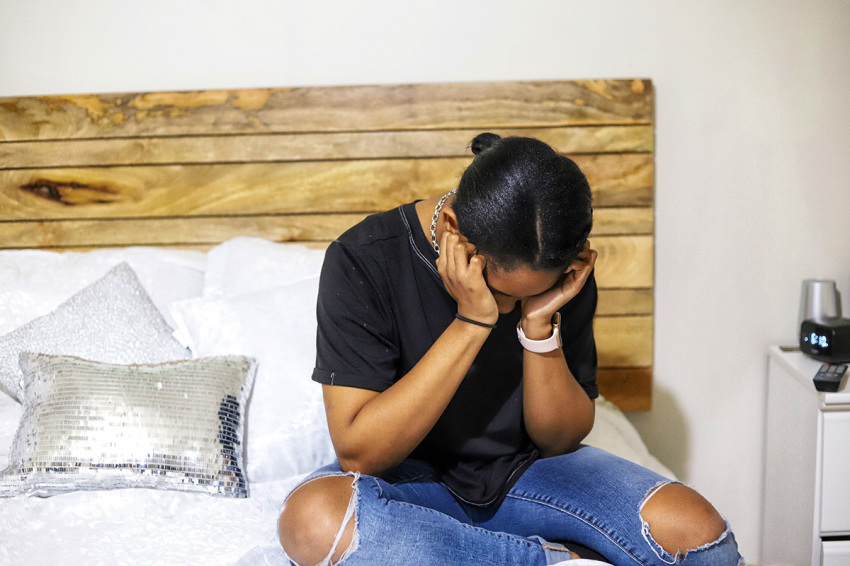44% of kids were ‘sad, hopeless’ during COVID-19 lockdowns; 19% contemplated suicide: CDC study

The Centers for Disease Control and Prevention has released the results of a survey on the effects of the COVID-19 pandemic and lockdowns on the mental health of children and adolescents, showing that more than 4 in 10 teenagers felt “sad or hopeless” and 1 in 5 contemplated taking their own lives.
More than 44% of students in the ninth through 12th grades experienced persistent feelings of sadness or hopelessness, according to the CDC study, which was conducted during the first half of last year. It also found that 19.9% of youths seriously considered attempting suicide, and 9% attempted suicide during the pandemic lockdowns when many schools were closed in 2020.
Overall, more than 37% of students experienced poor mental health, the study added, noting that the lack of camaraderie and distance away from friends had a greater negative impact on students for whom virtual learning was a poor substitute for maintaining closeness with friends.
More than 45% of students reported suffering negative effects on their mental health due to not being able to stay connected with friends, as they would have done if they had been attending in-person classes. Whereas, only 28.4% of the students who still felt they maintained close friendships without seeing friends in-person said they suffered poor mental health.
Similarly, 52.9% of those who no longer felt close to friends had persistent feelings of sadness or hopelessness, compared to 35.4% of those who continued to feel close to school friends even while their school was closed down due to the pandemic.
Further, 25.6% of those who did not feel close to their friends seriously considered attempting suicide, but the percentage dropped to 14% among those who felt they were able to sufficiently maintain friendships during the lockdowns. And in the number of those who attempted suicide, the percentage dropped from 11.9% to 5.8%.
“The same pattern was observed among students who were virtually connected to others during the pandemic (i.e., with family, friends, or other groups by using a computer, telephone, or other device) versus those who were not,” the study notes, adding, “Comprehensive strategies that improve feelings of connectedness with others in the family, in the community, and at school might foster improved mental health among youths during and after the COVID-19 pandemic.”
The CDC study also showed that a majority of teenagers were subjected to insults, put-downs and other forms of emotional abuse from a parent or other adult at home during the height of the 2020 lockdown.
About 55% said they endured cursing or other verbal insults from an adult in the home during the lockdown, NBC News said. More than 11% reported having suffered physical abuse.
“These data echo a cry for help,” Dr. Debra Houry, the CDC’s acting principal deputy director, said in a statement. “The COVID-19 pandemic has created traumatic stressors that have the potential to further erode students' mental wellbeing.”
In an exclusive column published in The Christian Post in January, Hedieh Mirahmadi shared her own experience and that of her guests in a podcast episode.
“My husband I were surprised to learn how many people in the church were affected by the horrible tragedy of suicide,” Mirahmadi wrote. “Out of a dozen live listeners, five of them had an immediate family member who either attempted or committed suicide — including myself.”
She continued, “My husband shared how in his early 20s, he placed a loaded gun inside his mouth, having lost the will to live. Interestingly, a commercial on TV about starving kids in Africa ultimately shocked him back into the reality that his life was worth living.”
In a separate account, a woman shared that her son’s girlfriend killed herself right before Christmas while pregnant with his child. "It shook the family to their core, but their faith in God is helping them heal.”
Last month, another study revealed that the number of alcohol-related deaths in the United States rose by more than 25% between 2019 and 2020, affecting almost every family.
According to research published in the Journal of the American Medical Association, 78,927 people died in the U.S. due to alcohol-related reasons in 2019. That number increased to 99,017 in 2020, an increase of 25.5%.
The research also found that while the death rates from alcoholism increased among all age groups, those between 35 and 44 years old saw the most pronounced jump in alcohol-related deaths. Among this group of adults, the alcoholism death rate roses from 22.9 to 32 per 100,000, or 39.7%.
In the age group of 25 to 34 years, the rate increased from 11.8 to 16.1 per 100,000, or 37.0%. The alcohol-related death rate increased from 13.7 to 17.5 per 100,000, or 27.3%, among females, while rising from 42.1 to 52.6 per 100,000, or 25.1%, among males.
In October 2020, a study titled “Mental Health Disorders Related to COVID-19–Related Deaths” published in The Journal of the American Medical Association had warned that “accumulating evidence indicates another ‘second wave’ [of deaths and disruption associated with the pandemic] is building: rising rates of mental health and substance use disorders.”
“This imminent mental health surge will bring further challenges for individuals, families, and communities, including increased deaths from suicide and drug overdoses,” the 2020 study predicted. “As with the first COVID-19 wave, the mental health wave will disproportionately affect black and Hispanic individuals, older adults, lower socioeconomic groups of all races and ethnicities, and health care workers.”



























